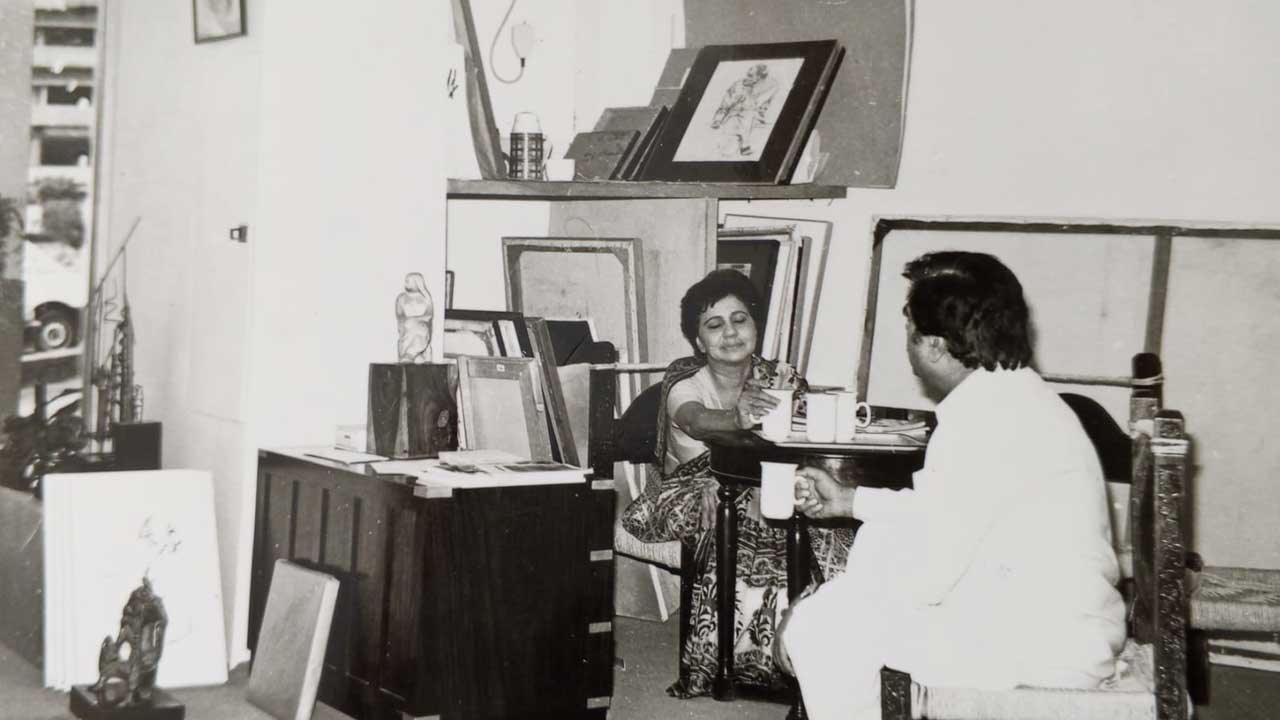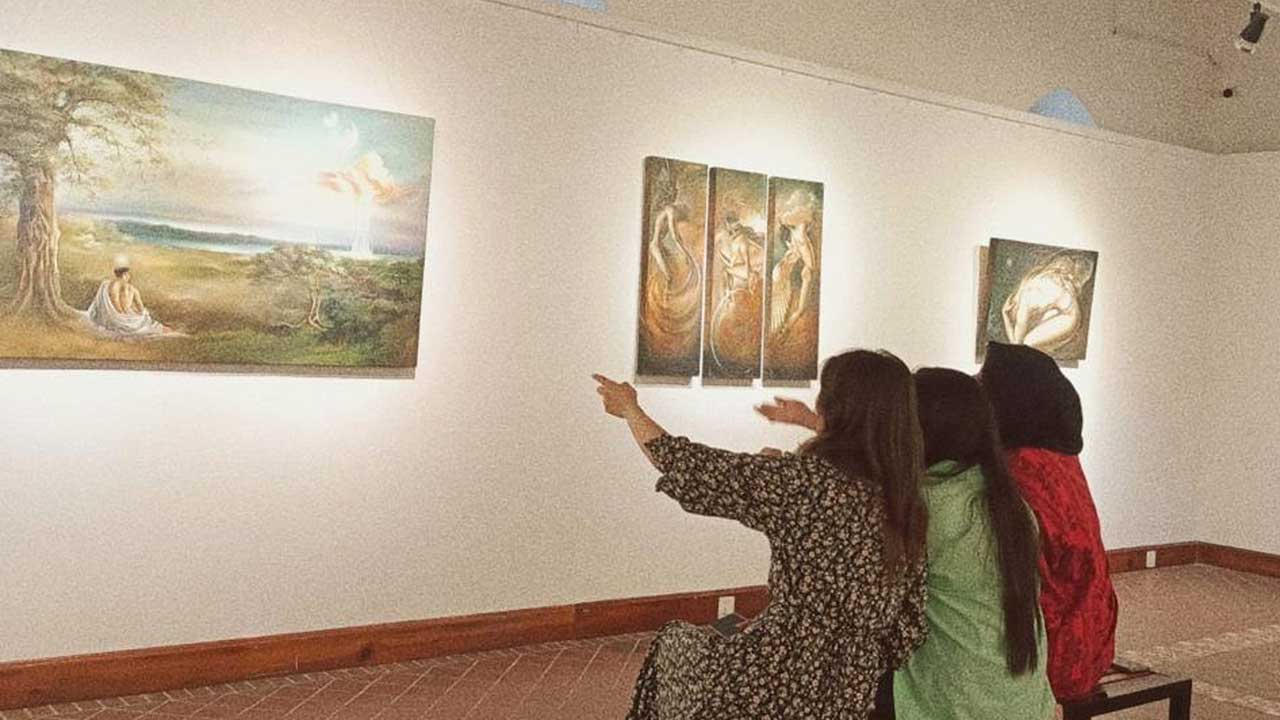The advent of the fashion industry that we know today by and large occurred during the Victorian Era. Britain went through several advancements during the 1800s, including the mass manufacturing of sewing machines, which in turn, enabled a greater production of clothes at cheaper rates. This coupled with innovations in advertisement printing, meant that fashion could be shared with the larger public, which invited a higher and quicker demand for new designs. Today, our lives are inculcated with a variety of fashion trends that shift with each season; but in the process there is a certain loss of identity and distinctiveness. Similar prints and cuts can be seen produced each year and by different brands, and as a result, they lack the exclusivity that singular garments once had.

With the recent relaunch of Khaas Contemporary in Islamabad, Bushra Waqas Khan’s latest body of work was exhibited in her first solo exhibition titled ‘The Red Carpet.’ The display instantly reminded one of the idea of individuality through attire. Heavily inspired by the extravagant styles of the Victorian era, Khan creates distinct designs, each with its own narrative waiting to be unraveled.


As a graduate of printmaking from the National College of Arts in 2008, Khan has been refining and developing her practice for over a decade and is now finally finding her foothold in the spotlight. Among her accolades, Khan has recently been shortlisted for the prestigious Victoria and Albert Museum Jameel Prize, and is the first Pakistani to make it in the design category.
One of the key traits of any printmaker is adaptation as there is a constant search for novel ways of producing art. For Khan, this came while teaching at a fashion university in Multan. Being surrounded by a world of garment-making ignited a new and provoking journey. The process of transferring an image bled into her current sculptural pieces where she uses an amalgam of heat-transfer paper and embroidery to shift the visuals onto the cloth.
There is an evident connection between the artist’s previous prints and her current work. Khan has long been fascinated with the designs on the Affidavit paper. This document is crucial in determining so much of our lives, be it, property, marriage or even our livelihood. It holds extreme value and can be passed down from one generation to the next, much like an heirloom. Khan questions through her process of designing female attire with motifs from a document that determines ownership, whether we would give the same value to women as we do to these inanimate objects.



Exploring the paper, Khan explains that if the Urdu text is removed from the sheet, the designs are essentially European which instinctively inspired the European cuts for her garments. In fact, the affidavit was originally designed by the British and given to Pakistan before their departure. Khan also creates further interest in these pieces through the addition of Urdu text as motifs and subtle hints of local design-cuts. The juxtaposition, much like the design of the affidavit, become visual representations of our postcolonial present.

The size of each garment is based upon the size of the ‘travelling mannequin’ which is used to create sample ideas of a garment before the actual one is produced. Khan, instead, uses these as her final product. With its miniature stature, the dresses create a new fantastical world for the viewer, a looking glass to see beyond the realities of this world. However, with the lack of colour in her pieces, there is a cloud of somberness that surrounds them; perhaps an indication to something deeper.
Presently, with a studio equipped with workers, zippers, fabric and designs, Khan continues to make these one-of-a-kind pieces. Each work of art is made by hand through a rigorous process of continual experimentation. After finalizing the design, Khan works alongside seamsters to achieve the finalized work. The reduced size has meant a more meticulous eye to detail, and an increasingly steady and dedicated craftsmanship. Her work shrewdly blurs the line between craft and art, and lends to the growing discourse of what can be defined as art.

On speaking about her inspirations, Khan mentioned her love for fashion and how various international labels understand the individuality of garments and the people that wear them. Clothes aren’t just as a cover, they become an extension of our identity.
Each piece that Bushra Waqas Khan creates holds that same sense of individuality; an identity that adorns a narrative of femininity, ownership and colonization, and how these come together to explore the current female experience.
References:
- Breward, Christopher (1995). The Culture of Fashion. Manchester University Press
- ‘The Red carpet’, exhibition catalogues, Khaas contemporary, March 2021
- Interview with Bushra Waqas Khan via Zoom call, April 2021
Jovita Alvares
Jovita Alvares is an artist and art writer from Karachi. She graduated with the title of Valedictorian (Class of 2016) from the Indus Valley School of Art and Architecture with a BFA. She frequently writes for local publications. Recipient of the Imran Mir Art Prize2017 and Resident Artist of the 4th Sanat Residency 2017 she regularly participates in group shows and artist talks.



There are no comments